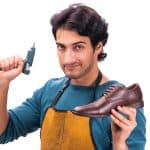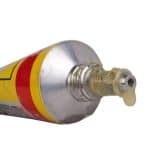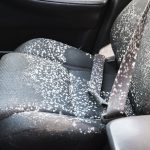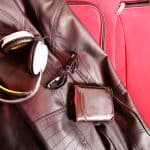You’ve probably noticed that some leather items can bubble over time and it ruins not just the durability, but also the quality. Leather bubbles look like air pockets underneath the top layer of leather and in this article, we’ll talk about what causes them and how you can get rid of them effectively.
What causes leather to bubble?
There are actually many reasons why a leather material bubbles – from heat, dirt, harsh cleaners, and more. You can commonly see these air pockets on items that go through a lot of wear and tear because that’s where the area will be most distorted. It’s important to what causes leather to bubble so you can look out for them and lessen the chances of it happening.
Here are the reasons bubbles or air pockets appear on leather items:
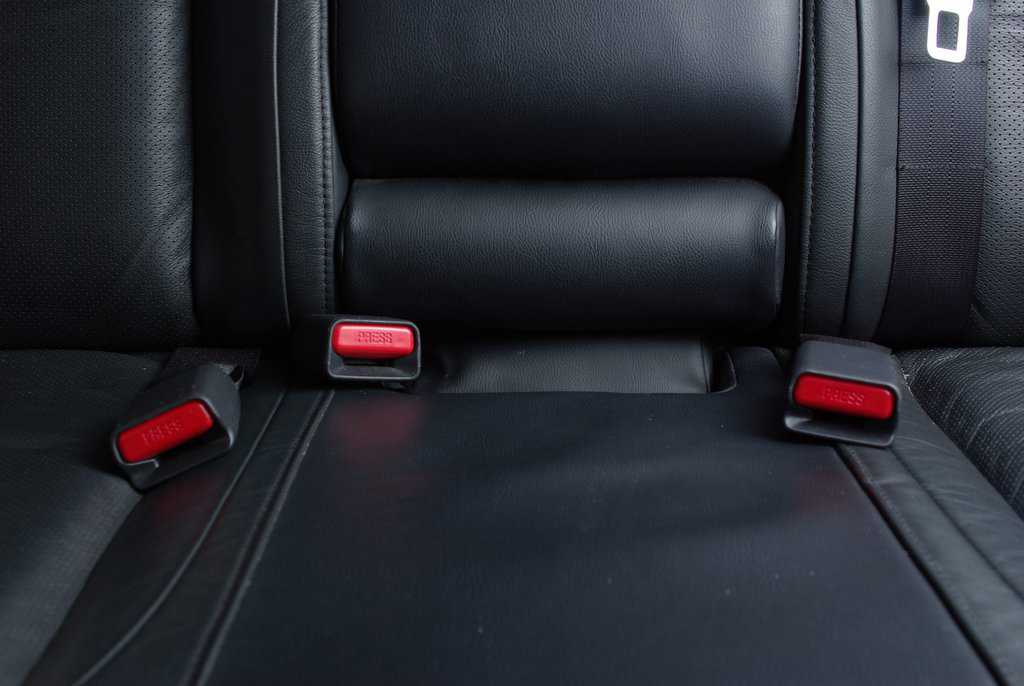
Low-quality leather
The first and most obvious reason why leather can bubble up is that it is made up of bad and low-quality leather. Synthetic materials, meaning faux leather items like bonded leather or bi-cast have a polyurethane top layer that acts as a protective coating. It can also be because of bad tanning methods and incorrect leather processing.
Because of external causative factors, the top layer will delaminate and rise causing bubbles to appear on the surface. It doesn’t matter how well you take care of your item because if it’s made from low-quality materials and cheap production, then you can’t expect it to last you years while looking great.
Excessive use of leather cleaners
Leather cleaners are great for leather care and maintenance, but only if you use them as necessary. There’s nothing wrong with cleaning your leather items to keep them looking pristine, but if you do it obsessively and more than necessary, there is a huge chance that it will damage the wax and natural oils of the leather. This will eventually cause the appearance of bubbles on the surface.
Harsh chemical cleaners
Even if the leather is durable, it is not immune to harsh chemical cleaners that are damaging to almost any type of material. Chemical cleaners, especially those that are not pH-balanced can dry out, weaken the leather fibers, and make them stretch thus, forming bubbles on the surface.
Dirt
Another common problem that you’ve probably had to deal with is dirty leather garments and furniture. These small dirt particles can absorb into the pores if left for too long causing the surface to look like it has developed blisters.
Another reason why it can cause the leather to bubble is that the dirt can clog the pores of the leather, making it unable to release moisture and heat. Even if you barely use your item, if it’s not stored properly, it can still accumulate grime and dirt.
Moisture and humidity
Moisture and humidity are also two of the most common damaging factors when it comes to leather. Although you can wipe off moisture and keep your leather in a properly-ventilated room, excessive moisture and humidity cause it to absorb the liquid. This will make the leather fibers and the dyes used swell up and bubble.
Body oil build-up
If you own a leather item that you wear now and then, you can’t avoid rubbing your body oils on it as you go along your day. This includes salt stains from your sweat too. What this does is that the salt contents and your body sebum cause build-up on the material that will clog its pores.
If you leave the sebum uncleaned on the leather surface, it will also cause a chemical reaction, forming a film layer on top of the leather which can cause air pockets.
Heat and sun exposure
Heat and sun exposure can do much damage to your leather item from warping to the dyes fading, and drying to fibers out. Even if you don’t expose the leather directly to sunlight, applying artificial and extreme heat to the leather will cause it to bubble. Both heat and sun exposure will cause the leather material to become soft and pliable. When this happens, it will lose its shape and begin forming air bubbles.
Pressure marks
Pressure marks are caused by placing heavy objects on top of a leather material for a long period of time. For sofas, shoes, and other furniture that are often used, it can be caused by your constant weight by sitting on them or wearing them. Heavy pressure on leather will cause the fibers to crack over time and cause the leather to stretch out.
This stretched-out area will then be filled with air and will lift forming bubbles on the surface. It is especially bad if your leather car seats or leather sofa are not properly fitted onto the frames which can easily give in and create air pockets.
Adhesives
Sometimes, the air bubbles on your leather item can be caused by failing adhesives. Constant and long usage of leather will cause the material to expand and contract, and eventually, the adhesives used on them will break down. If the leather goods are made with cheap adhesives, these will peel off easily and will expose the goods to air pockets among many other damages.
Failing adhesives can also be attributed to high heat or direct sunlight exposure for a long time as these things can cause the glue to weaken and lose its strength. On the other hand, extremely low temperatures can also cause the materials to shrink and create tensions that a low-quality glue can’t hold.
How to fix bubbles in car leather
Bubbles in car leather can be unsightly and probably embarrassing if you love showing your car off. If you don’t want bubbles in your leather car seats, here’s how you can fix them.
Applying pressure over the bubble
If the bubbles are delicate and could cause peeling, especially on faux leather, you should probably avoid any harsh methods that might make the problem worse. This method is quite safe, but it might not work for more extreme cases.
To do this, you will need a heavy object, not too heavy, but just enough to apply a decent amount of pressure on the affected area. You will also need a flat object to evenly spread out the pressure and not cause any marks on the surface of the leather. If the surface is not flat, you can use a sponge below the heavy object to conform to the shape of the surface.
You can also do this with your hands if you cannot use gravity to your advantage. Press the bubble with a sponge so the pressure is even, and not just where your fingers are. Leave it for a few minutes until the bubble is minimized.
Heat gun method
In many cases, it’s because the glue holding the material down has loosened up for certain reasons. With this method, we’re going to try to reactivate the glue with heat and press it down to hopefully let the leather stick again.
Things you will need:
- A blow dryer or heat gun
- Heavy object
- Sponge
- Ice or cold water
- Clean cloth
Steps:
- Clean the surface of the leather from any debris.
- Turn on your blow dryer and heat the area gradually. Do not concentrate the heat on one spot, keep it moving.
- Once the bubble expands a little bit, rub some ice or cold water with the sponge and place a heavy object on the sponge over the bubble.
- Let it sit for about 30 minutes.
This method allows the reactivation of the glue used to put the two materials together, and the cold allows it to set back in. The sponge plays an important role as its soft nature allows the heavy object to evenly spread that pressure and put it back in its proper shape. Once it is cool, it should have taken on its original shape and the bubble will have stuck back down.
Syringe and glue method
If heat cannot reactivate the glue or you don’t feel comfortable using heat, you can add more glue underneath the bubble and press it back down, assuming it hasn’t been stretched too much. Here’s how to properly do this method.
Things you will need:
- A syringe with a small needle
- Leather glue or superglue (if you can’t find leather glue)
- Paper towel
- Clean cloth
- Card scraper or cylindrical object such as a roller
Steps:
- Clean the surface with a dampened clean cloth to remove any debris.
- Fill the syringe with some glue. Only a small amount is needed.
- Pierce the leather from the side, going in at a shallow angle.
- Fill the bubble with some glue. Don’t put in too much or else clean up will be a mess.
- Massage the glue and spread it inside the bubble.
- Using a card scraper or a roller, flatten and extrude the excess glue. Make sure to use a paper towel to absorb the excess and prevent it from getting on the surface.
- Leave it to dry and set it for a few hours before using it again.
How to prevent leather bubble
Aside from making sure that you buy high-quality leather goods made from quality materials, in order to prevent leather bubbles on your prized garments or furniture, you also have to be mindful of how you wear them and where you store them. Most of the factors we listed above that can cause air pockets in your leather goods are easily avoidable or can be remedied with simple methods.
Here are some tips on how to prevent leather bubbles:
- Buy high-quality leather goods. Avoid faux leather items as those are the ones that are most likely to have leather bubbles.
- Wipe off any spilled liquid, excess moisture, and body oils or sweat as soon as possible.
- Do not place heavy or sharp objects on top of your leather goods.
- Keep your items away from direct heat or direct sunlight. Store them in a cool dry place with proper ventilation. Or use a sun shade to protect your car’s interior.
- Avoid using harsh chemical products to clean the leather.
- The cleaning process can be drying so only clean your leather items once every six months or when absolutely necessary.
- Apply UV-ray protectants and water-repellent spray for added protection to your leather items.
Professional services
There are people obsessed with every detail of a car and they work to fix every blemish that you may or may not even see. They have an array of tools not just for cleaning cars, but also fixing common car problems.
One of those common problems is leather bubbles. A reputable car detailer will have had experience with practically every common car problem there is when it comes to the interior or the exterior. Chances are, they will also have solutions for it and ways to fix it without damaging anything else in the interior.
Sometimes the bubbles are just too severe that you might need to go to the upholsters to get new leather on your seats. This is not a bad option as the upholster could get you even better leather on your seats that might last longer, too.
Conclusion
Leather goods can serve you well for decades if you take care of them properly and this includes making sure that they aren’t subjected to damaging situations. Leather bubbles are something that can be avoided if you have the proper knowledge. We hope that this article helped you in dealing with leather bubbles and how to avoid them next time.
FAQ
Will air bubbles go away?
Yes, air bubbles on leather usually go away with using a heat gun or the syringe and glue method. You can also opt for professional services if you are not confident doing it on your own. If all else fails, you can still do some rewrapping to make it look brand new.
Does hot water expand leather?
Hot water can indeed make the leather expand. This is because heat makes the leather softer and more pliable, thus making it stretchier too. If you want to stretch a leather garment that is too tight on you, you can also use the hot water method to expand and gently stretch the leather to your liking. Just be wary as too much heat on leather can be damaging.
How do you reshape warped leather?
Warped leather can be reshaped with heat and water, however, you should be careful when doing this as it can ruin and loosen your leather. Only do this if the warping is very minor. On larger warps, trying to manipulate the leather can lead to even more problems instead.



